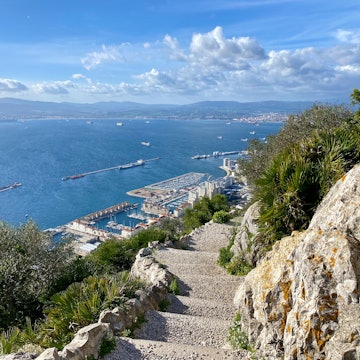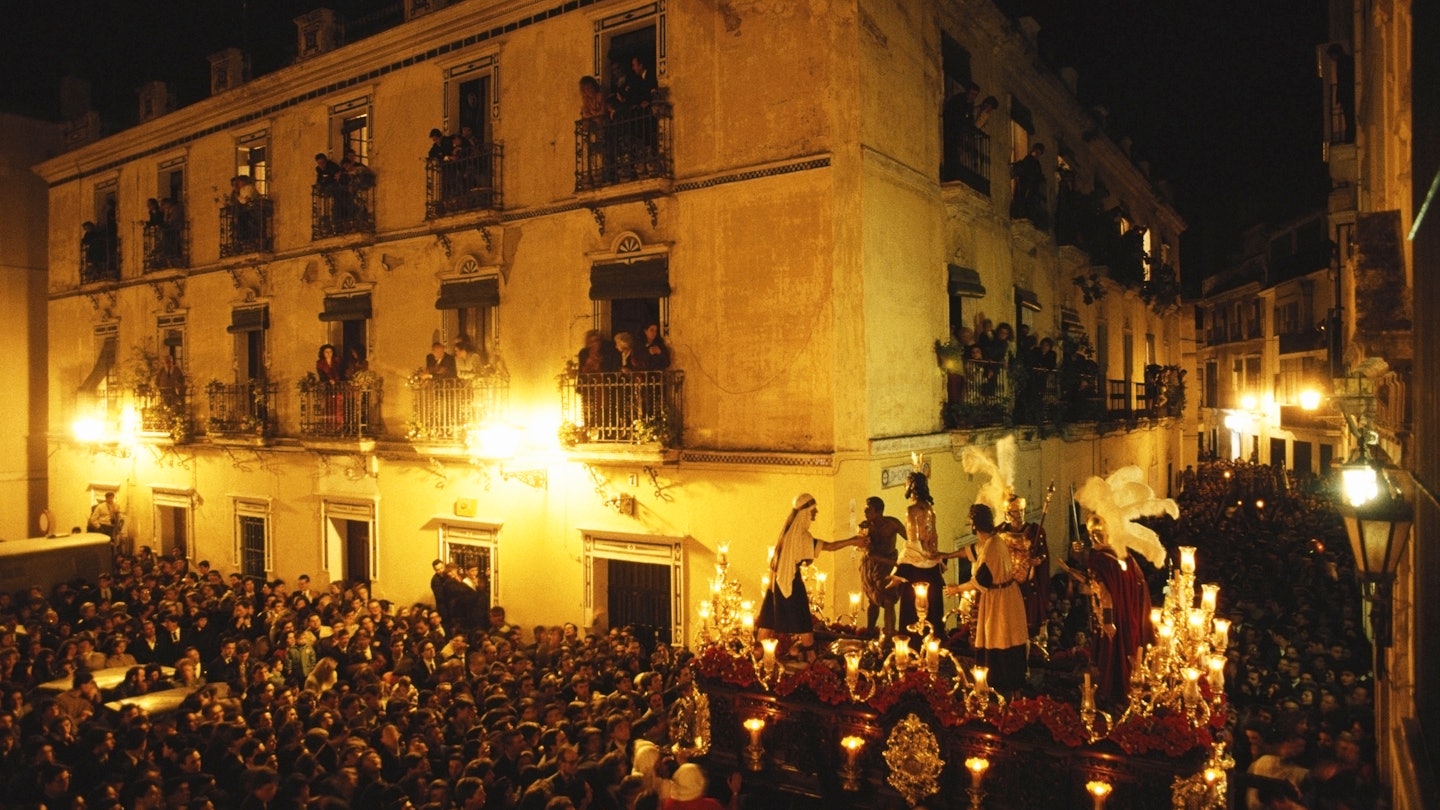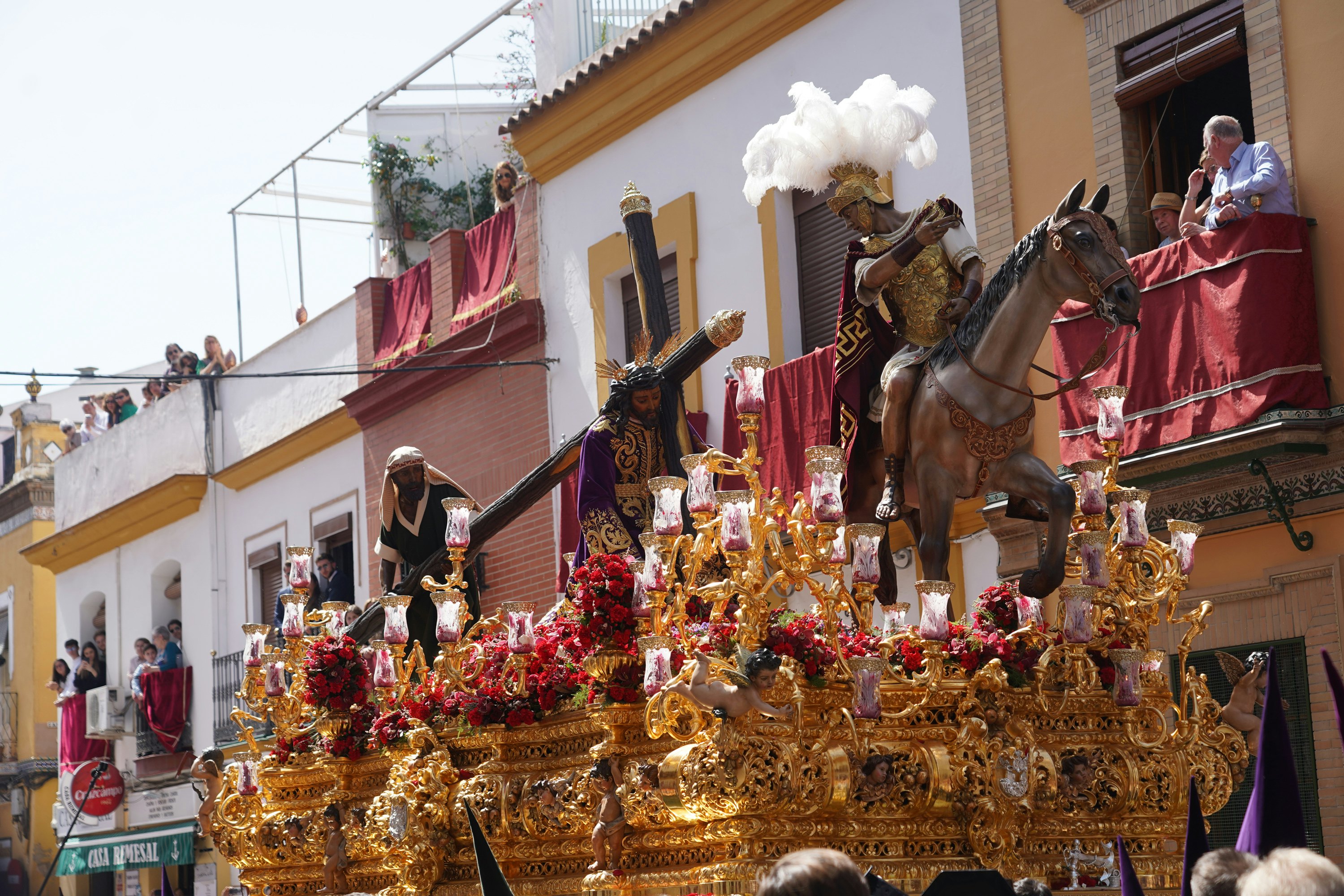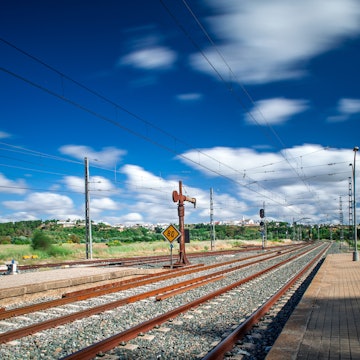
Planning on visiting Spain for Semana Santa? Here’s all you need to know

Mar 14, 2023 • 5 min read

Some 50,000 people participate each year in Seville’s Semana Santa proceedings – some of the most memorable in Spain © Chris Sattlberger / Getty Images
As in most of Europe, Spain has grown increasingly secular in recent decades. Yet in the week leading up to Easter, Spaniards of all regions and levels of devotion continue to participate in traditions and rituals that have marked the most important holiday on the Christian calendar for centuries.
Here’s our guide to navigating Semana Santa in Spain.
What is Semana Santa?
Semana Santa is Spain’s Holy Week, leading up to Easter Sunday. It’s celebrated all over the country and is the most important religious celebration in Spain. Depending on where you go, Semana Santa will look quite different. In the southern cities of Andalucía you’ll find elaborate and extravagant festivals; in Castilla y León more somber affairs predomindate. The celebrations can feature singing (as in Seville or Zamora), skeleton dances (in Verges, Catalonia) or drumming (Cuenca).
After a few years of events canceled or reduced due to the pandemic, Semana Santa processions will be more fervent than ever in 2023. Keep in mind that this is one of Spain’s busiest holidays, with increased accommodation costs, traffic and crowds to match. Additionally, certain shops, restaurants and even tourist sites will close during this time, too. Even so, Semana Santa provides one of the best ways to experience traditional Spanish culture.

When does Semana Santa take place in 2023?
This year Semana Santa will start on Palm Sunday, April 2, and run for a week, culminating in Easter Sunday on April 9. Some cities will have parades going on non-stop all week, while others will hold major ones on key days of the week.
What events will be happening?
The main events are the processions organized by various religious brotherhoods, or cofradías. Each group dresses up in matching long and brightly colored robes, typically with tall pointed hoods that often only leave two small holes for the eyes. Throughout the week, cofradía members parade through their city carrying huge, intricate floats, usually bedecked in gold and decorated with flowers and candles. Featuring three-dimensional depictions of Jesus and the Virgin Mary from the story of the Passion of Christ, the floats are carried on the shoulders of members of the brotherhoods called costaleros, accompanied by solemn tunes from a brass band.

Typically, the most dramatic and passionate processions take place on Holy Thursday and Good Friday, when mourners dressed in black lace and carrying candles typically join in. (Look out for the children who sneak in among them to collect the dripping wax.) You should take care when out walking: streets will often become slippery over the course of the week due to the volume of wax that drips down from participants’ candles.
On Easter Sunday, when Christ’s miraculous resurrection is celebrated, the parades become a lot more jubilant and colorful, with the music picking up its pace.

Which are the best cities and towns in Spain to experience the festival?
Seville
The Andalusian capital of Seville reigns supreme when it comes to Easter celebrations in Spain. Semana Santa has been celebrated here since the 16th century; today, the city holds a whopping 58 processions throughout the week that involve some 50,000 participants. A magical part of the Seville experience are the saetas, flamenco songs performed on balconies along the procession at timely moments.
Málaga
Málaga is another Andalusian city famous for its pre-Easter festivities. A unique local twist on Semana Santa here: each year, one of the city’s prisoners is pardoned and released, a tradition begun during reign of King Carlos III in the 18th century. One of the highlights occurs on Good Friday, when the nuns of La Cruz convent sing in the Plaza de Arriola.
Granada
The ancient Moorish city of Granada takes its Semana Santa processions very seriously, with 32 cofradías taking part throughout the week. Two of the most emotionally charged parades occur on Holy Thursday and Good Friday. Holy Thursday brings the Cristo de la Misericordia parade – also referred to El Silencio, because it takes place at night in total silence. On Good Friday, another nighttime procession is held in which actors represent figures from the Bible.

Zamora
Located on the banks of the Douro River in Spain’s Castilla y León region, Zamora holds one of the best Semana Santa celebrations outside Andalucía. Gregorian chants and choral music characterize the daytime parades here, while nighttime ones are held in silence. The standout procession here is Holy Wednesday’s Cristo de las Injurias, with its impressive drum performance.
Valladolid
Another Castilla y León city that goes all out for Semana Santa is Valladolid. Good Friday is the best day: you can expect horse parades and the Passion Procession, with over 1000 participants and 31 extravagant religious floats, many of which date back to the 16th and 17th centuries.
Toledo
Semana Santa in the historic, Unesco-listed city of Toledo in Castilla–La Mancha is a solemn yet impressive affair. Visiting Toledo during Easter week also brings the chance to peek inside all the city’s convents and monasteries, many of which aren’t open to the public the rest of the year.
Cuenca
Set atop a dramatic gorge in Castilla–La Mancha, Cuenca certainly provides a spectacular backdrop for standout Easter festivities. More than 30,000 people take part in its nine processions, the highlight of which is the Camino del Calvario (or Las Turbas), which starts just before sunrise on Good Friday and features religious statues escorted by drummers.
Verges
The Catalonian town goes all out on Holy Thursday with a procession featuring people dressed as Roman soldiers known as 'Manges'. The macabre climax of the event though is the Dance of Death - a tradition that originated during the Early Middle Ages when death came early through wars and plagues. It's a spirited affair with skeletons, dancers, light displays and a lot of drumming.

What do you eat during Semana Santa?
Although you may see chocolate in some Spanish cities, it’s not really a traditional Easter treat in Spain. More typical are torrijas, a Spanish version of French toast lightly dusted with cinnamon sugar. Other traditional Easter delicacies to try are the monas de Pascua (Easter Cakes) – rings of sweet bread topped with candied fruit and hard-boiled eggs – and the buñelos de viento, small, light and airy fried doughnuts.
What should I pack?
The weather in early April in Spain can be hit-and-miss all over the country; come prepared for both rainy and sunny days. Remember that if you want to visit churches and cathedrals, you will need to dress slightly conservatively, covering your shoulders and skipping skirts or dresses that land above the knee.















